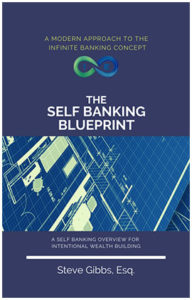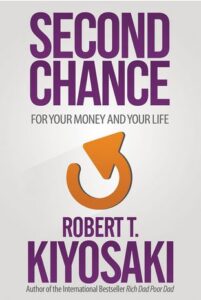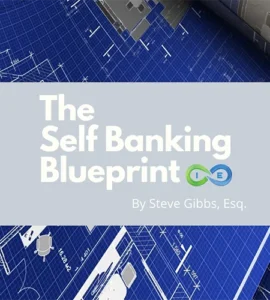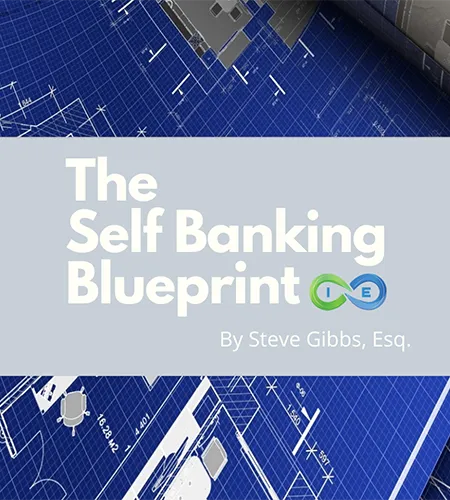The Creature from Jekyll Island was first published in 1994. This year will mark its 30th anniversary. We thought it fitting to provide a brief look at this most influential book, especially considering the current financial instability we are seeing in our own country and around the globe. Our goal in presenting this brief summary, which is more like cliff notes than a book review, is to bring more awareness to the book and hopefully open more people’s minds to the state of our current banking system.
We encourage you to read the entire book. Nowadays it is relatively easy to access as you can read the .pdf online by clicking one of the following:
We thought the best place to start would be the beginning, so that is what we will do. The Creature from Jekyll Island begins with some words from the author, Mr. Edward Griffin. In the preface he writes,
It was intended that this book would be half its present size and be completed in about one year. From the beginning, however, it took on a life force of its own, and I became but a servant to its will. It refused to stay within the confines prescribed and, like the genie released from its bottle, grew to enormous size. When the job was done and it was possible to assess the entire manuscript, I was surprised to realize that four books had been written instead of one.
First, there is a crash course on money, the basics of banking and currency. Without that, it would be impossible to understand the fraud that now passes for acceptable practice within the banking system.
Second, there is a book on how the world’s central banks—the Federal Reserve being one of them—are catalysts for war. That is what puts real fire into the subject, because it shows that we are dealing, not with mere money, but with blood, human suffering, and freedom itself.
Third, there is a history of central banking in America. That is essential to a realization that the concept behind the Federal Reserve was tried three times before in America. We need to know that and especially need to know why those institutions were eventually junked.
Finally, there is an analysis of the Federal Reserve itself and its dismal record since 1913. This is probably the least important part of all, but it is the reason we are here. It is the least important, not because the subject lacks significance, but because it has been written before by writers far more qualified and more skilled than I. As mentioned previously, however, those volumes generally have remained unread except by technical historians, and the Creature has continued to dine upon its hapless victims.
There are seven discernible threads that are woven throughout the fabric of this study. They represent the reasons for abolition of the Federal Reserve System. When stated in their purest form, without embellishment or explanation, they sound absurd to the casual observer. It is the purpose of this book, however, to show that these statements are all-too-easy to substantiate.
The Federal Reserve System should be abolished for the following reasons:
- It is incapable of accomplishing its stated objectives. (Chapter 1.)
- It is a cartel operating against the public interest. (Chapter 3.)
- It is the supreme instrument of usury. (Chapter 10.)
- It generates our most unfair tax. (Chapter 10.)
- It encourages war. (Chapter 14.)
- It destabilizes the economy. (Chapter 23.)
- It is an instrument of totalitarianism. (Chapters 5 and 26.)
This is a story about limitless money and hidden global power. The good news is that it is as fascinating as any work of fiction could be, and this, I trust, will add both pleasure and excitement to the learning process.
The bad news is that every detail of what follows is true.
Edward Griffin
The next section presented here is the table of contents. We are including it in its entirety so any reader of this book review will see the great pains the author has gone to provide a comprehensive study of the Federal Reserve.
TABLE OF CONTENTS
- Preface i
- Acknowledgments iv
- Introduction v
Section I. WHAT CREATURE IS THIS?
What is the Federal Reserve System? The answer may surprise you. It is not federal and there are no reserves. Furthermore, the Federal Reserve Banks are not even banks. The key to this riddle is to be found, not at the beginning of the story, but in the middle. Since this is not a textbook, we are not confined to a chronological structure. The subject matter is not a curriculum to be mastered but a mystery to be solved. So let us start where the action is.
- The Journey to Jekyll Island 3
- The Name of the Game Is Bailout 25
- Protectors of the Public 41
- Home Sweet Loan 67
- Nearer to the Heart’s Desire 85
- Building the New World Order 107
Section II. A CRASH COURSE ON MONEY 133
The eight chapters contained in this and the following section deal with material that is organized by topic, not chronology. Several of them will jump ahead of events that are not covered until later. Furthermore, the scope is such that the reader may wonder what, if any, is the connection with the Federal Reserve System. Please be patient. The importance will eventually become clear. It is the author’s intent to cover concepts and principles before looking at events. Without this background, the history of the Federal Reserve is boring. With it, the story emerges as an exciting drama which profoundly affects our lives today. So let us begin this adventure with a few discoveries about the nature of money itself.
- The Barbaric Metal 135
- Fool’s Gold 155
- The Secret Science 171
- The Mandrake Mechanism 185
Section III. THE NEW ALCHEMY 215
The ancient alchemists sought in vain to convert lead into gold. Modern alchemists have succeeded in that quest. The lead bullets of war have yielded an endless source of gold for those magicians who control the Mandrake Mechanism. The startling fact emerges that, without the ability to create fiat money, most modern wars simply would not have occurred. As long as the Mechanism is allowed to function, future wars are inevitable. This is the story of how that came to pass.
- The Rothschild Formula 217
- Sink the Lusitania! 235
- Masquerade in Moscow 263
- The Best Enemy Money Can Buy 285
Section IV. A TALE OF THREE BANKS 307
It has been said that those who are ignorant of history are doomed to repeat its mistakes. It may come as a surprise to learn that the Federal Reserve System is America’s fourth central bank, not its first. We have been through all this before and, each time, the result has been the same. Interested in what happened? Then let’s set the coordinates of our time machine to the colony of Massachusetts and the year 1690. To activate, turn to chapter fifteen.
- The Lost Treasure Map 309
- The Creature Comes to America 325
- A Den of Vipers 341
- Loaves and Fishes, and Civil War 361
- Greenbacks and Other Crimes 377
Section V. THE HARVEST 405
Monetary and political scientists continue to expound the theoretical merits of the Federal Reserve System. It has become a modern act of faith that economic life simply could not go on without it. But the time for theory is past. The Creature moved into its final lair in 1913 and has snorted and thrashed about the landscape ever since. If we wish to know if it is a creature of service or a beast of prey, we merely have to look at what it has done. And, after the test of all those years, we can be sure that what it has done, it will continue to do. Or, to use the Biblical axiom, a tree shall be known by the fruit it bears. Let us now examine the harvest.
- The London Connection 407
- Competition Is A Sin 431
- The Creature Swallows Congress 451
- The Great Duck Dinner 471
Section VI. TIME TRAVEL INTO THE FUTURE 505
In the previous sections of this book, we have travelled through time. We began our journey by stepping into the past. As we crisscrossed the centuries, we observed wars, treachery, profiteering, and political deception. That has brought us to the present. Now we are prepared to ride our time machine into the future. It will be a hair-raising trip, and much of what lies ahead will be unpleasant. But it has not yet come to pass. It is merely the projection of present forces. If we do not like what we see, we still have an opportunity to change those forces. The future will be what we choose to make it.
- Doomsday Mechanisms 507
- A Pessimistic Scenario 537
- A Realistic Scenario 565
PHOTOGRAPHS
The seven men who met in secret at Jekyll Island 24
The Fabian Society stained-glass window 106
First photo section 208-214
Period cartoons about the Rothschilds 234
Items relating to the sinking of the Lusitania 262
Second photo section 396-404
APPENDIX
- Structure and Function of the Federal Reserve 590
- Natural Laws of Human Behavior in Economics ………. 592
- Is Ml Subtractive or Accumulative? 594
BIBLIOGRAPHY 596
INDEX 602
In this last section we have provided brief summaries of the first six chapters of The Creature from Jekyll Island, by Edward Griffin, in hopes that they serve to motivate you to read the book for yourself and pass it along to others.
Chapter 1. What Creature is This?
This chapter discusses the origins and true nature of the Federal Reserve System in the United States. The key points are:
- Origins of the Federal Reserve: The Federal Reserve was created in response to the financial panics of the early 20th century, particularly the panic of 1907. The system was conceived during a secret meeting on Jekyll Island, Georgia, in 1910. Attendees included powerful bankers and financiers such as Nelson W. Aldrich, Frank A. Vanderlip, and Paul M. Warburg.
- Purpose and Nature of the Federal Reserve: Contrary to its public image as a government agency designed to stabilize the economy, the Federal Reserve is portrayed as a banking cartel. Its real purpose was to protect the interests of large banks and limit competition, rather than to serve the public interest. The Federal Reserve’s ability to create money and control the nation’s monetary policy has been a powerful tool for these private interests.
- Implementation and Impact: Since its inception, the Federal Reserve has been involved in managing the nation’s money supply and banking system. However, its effectiveness in stabilizing the economy is questioned, with Mr. Griffin citing various economic crises (such as the Great Depression and later recessions) as evidence of its failure in this regard.
- Public Deception: The formation and operations of the Federal Reserve are seen as deceptive, with its true objectives and the interests it serves being quite different from its publicly stated goals. The secretive nature of its origin is highlighted as indicative of this deceptive approach.
- Continued Influence and Control: The Mr. Griffin implies that the Federal Reserve continues to serve the interests of the banking elite, with significant control over the American economy and, by extension, the global financial system.
In summary, chapter 1 presents a critical view of the Federal Reserve, suggesting that it is a powerful financial institution serving the interests of a banking cartel rather than the public, and that its creation and operations have been shrouded in secrecy and deception.
Chapter 2. The Name of the Game is Bailout
In this chapter, the Mr. Griffin provides an insightful analogy to explain the complex financial mechanisms used in the banking sector, particularly focusing on how taxpayer money is often used to bail out banks when they face financial crises due to non-performing loans. Here are the key takeaways:
- Banking as a Game: The article compares the banking system to a professional sporting event, with specific rules and objectives that may seem chaotic to the uninitiated. This analogy helps in simplifying and explaining the complex mechanisms of banking and financial bailouts.
- Creation of Money and Profit from Loans: A significant point made is that banks create money out of nothing through the process of issuing loans. The profit for banks comes not from spending this money but from the interest accrued on these loans.
- Risks and Defaults: The article highlights that when borrowers default on their loans, banks face losses. However, since the money was created out of nothing, the actual tangible loss is minimal, mostly affecting the bank’s ledger.
- Bailout Game: A key theme of the article is the ‘Bailout Game,’ where banks, to avoid losses, engage in a series of steps like rolling over loans, increasing loan sizes, and getting government guarantees to ensure they continue receiving interest or avoid taking losses on bad loans.
- Government Involvement and Taxpayer Burden: The article criticizes the involvement of the federal government in guaranteeing bad loans, which effectively shifts the financial burden from the banks to the taxpayers. This is often done under the guise of protecting the economy or the public.
- Role of FDIC and Inflation: The Federal Deposit Insurance Corporation (FDIC) is discussed as a mechanism to pay off depositors in case of bank insolvencies. However, the FDIC is funded by the banks and ultimately by the depositors themselves. When FDIC funds are exhausted, the Federal Reserve creates new money, leading to inflation, which again indirectly taxes the public.
- Conclusion: The article concludes that while the banking and financial system appears to operate under well-defined rules, these often lead to the public bearing the cost of financial mismanagement and risky banking practices, primarily through government bailouts and inflation.
In summary, “The Name of the Game is Bailout” presents a critical view of the banking system, highlighting the mechanisms by which banks and governments manage financial crises at the expense of taxpayers, often leading to inflation and other economic issues.
Chapter 3. Protectors of the Public
Chapter three of the book delves into specific cases where the bailout game, previously discussed, has been applied in real-world scenarios. This chapter moves away from theoretical explanations to concrete examples involving major corporations and banks such as Penn Central, Lockheed, New York City, Chrysler, Commonwealth Bank of Detroit, First Pennsylvania Bank, and Continental Illinois. These examples serve to illustrate the practical application of the bailout strategies and the implications for the taxpayers, the government, and the overall economy. The key points are:
- Real-World Bailouts: The chapter focuses on actual cases of bailouts, moving from the hypothetical and theoretical to the concrete and tangible. This shift provides a more grounded understanding of how bailouts function in real economic situations.
- Major Corporations and Banks: The cases discussed include significant entities such as Penn Central, Lockheed, and major banks like Continental Illinois. These examples demonstrate how large-scale operations are often at the center of bailout scenarios, highlighting the interplay between big business and government.
- Impact on Taxpayers: A recurring theme in these case studies is the burden placed on taxpayers. The chapter underscores how government interventions, while saving corporations and banks, often result in financial implications for the public, primarily through increased taxes or inflation.
- Government’s Role in Bailouts: The involvement of the government, especially through mechanisms like the Federal Reserve System, is a critical aspect of these bailouts. The chapter illustrates the government’s role as a lender of last resort and how this function is utilized in bailout situations.
- Economic and Political Implications: Each case study offers insights into the broader economic and political ramifications of bailouts. This includes the effects on market competition, financial stability, and the precedent set for future economic policies and corporate behavior.
- Critique of Current Systems: The chapter serves as a critique of the current financial and political systems, questioning the sustainability and fairness of using public funds to rescue failing private enterprises and the potential moral hazard this creates.
- Nationalization and Market Impacts: Some cases, like that of Continental Illinois, lead to a form of de facto nationalization, with the government taking significant control over private entities. The chapter examines how these actions affect market dynamics and competition.
In summary, chapter three provides a detailed examination of specific bailout cases, offering insights into the practical application of these strategies, the roles of various stakeholders, and the broader economic and social implications.
Chapter 4. Home, Sweet Loan
Chapter four delves into the history of government intervention in the housing industry, the resultant distortion of free-market forces in residential real estate, and the subsequent crisis in the Savings and Loan (S&L) industry. This chapter also discusses the bailout of the S&L industry using taxpayer money. Here are the key takeaways:
- Origins in the Great Depression: The interventionist policies in the housing market began during the Great Depression, influenced by socialist ideas. The government aimed to protect citizens in their economic affairs, which led to the creation of federal agencies to safeguard deposits in S&Ls and subsidize home mortgages.
- Government Regulation and Distortion: Over time, government measures effectively removed real estate loans from the free market, placing them under political control. This led to mismanagement and encouraged risky business practices, ultimately weakening the S&L industry.
- S&L Crisis and Insolvency: Many S&Ls became insolvent due to failed high-risk investments and a drop in real estate values. The federal insurance fund set up to protect these institutions was quickly depleted, leaving the government with promises to bail out but without the funds.
- Accounting Gimmicks: Regulators resorted to accounting gimmicks to make insolvent thrifts appear solvent, allowing them to continue operating. This only postponed and worsened the inevitable crisis, leading to greater losses and increased costs for eventual bailouts.
- The Cost of Bailouts: The estimated cost of bailing out the S&L industry reached over one trillion dollars, a burden ultimately shouldered by taxpayers through taxes and inflation. This colossal sum was facilitated by the Federal Reserve System’s ability to create money.
- Political Paralysis and Complicity: Congress, heavily influenced by donations from the S&L industry and responsible for the regulatory framework that led to the crisis, appeared unable and unwilling to address the issue effectively.
- The Role of the Federal Reserve: The S&L industry is portrayed as a smaller cartel within the larger cartel of the Federal Reserve System. The crisis and subsequent bailout could not have occurred without the Federal Reserve’s role in creating the necessary funds.
In summary, “Home, Sweet Loan” presents a critical analysis of government intervention in the housing market, illustrating how well-intentioned policies can lead to market distortions, crises, and costly bailouts, ultimately impacting the average citizen.
Chapter 5. Nearer to the Heart’s Desire
Chapter five examines the 1944 Bretton Woods Conference and its pivotal role in shaping modern international finance. Key figures like John Maynard Keynes and Harry Dexter White led the establishment of the International Monetary Fund (IMF) and the World Bank. The chapter argues these institutions were designed to phase out gold in world finance and foster world socialism under the guise of economic stability and development. Here are the key takeaways:
- Origins at Bretton Woods: The IMF and World Bank were created during the Bretton Woods Conference, with the publicly stated goal of stabilizing international currency exchange and aiding war-torn and developing nations. However, the underlying intent was to eliminate gold as the basis for currency exchange and shift towards a manipulated paper standard.
- Fabian Socialism and Communist Influence: Key architects of Bretton Woods, like Keynes and White, were influenced by Fabian Socialism, aiming for gradual transition to socialism. White’s later revealed connection to a Communist espionage ring suggests a deeper socialist and communist agenda in the creation of these international financial institutions.
- Shift from Gold-Exchange Standard: The goal was to move away from a gold-exchange standard to a system where currencies could be manipulated without the discipline imposed by gold. This led to the eventual creation of Special Drawing Rights (SDRs) by the IMF, essentially representing a form of global fiat currency.
- IMF and World Bank Operations: The IMF began as a sort of international FDIC, providing currencies to countries facing temporary financial difficulties. The World Bank focused on loans for development projects, but these often led to governmental control and expansion, aligning with socialist principles.
- Support for Totalitarian Regimes: The chapter suggests that the IMF and World Bank have often supported socialist and totalitarian regimes, undermining free enterprise and contributing to economic decline and human rights violations in recipient countries.
- Failure of Socialist Ventures: Numerous examples are given of countries receiving IMF and World Bank funds only to see economic decline due to the promotion of state-controlled enterprises and socialist policies.
- Conclusion – The Hidden Agenda of World Socialism: The chapter concludes that the true agenda of the IMF and World Bank, facilitated by the Federal Reserve, is the establishment of world socialism. This agenda is hidden behind the public objectives of economic stability and development assistance.
In summary, chapter five argues that the Bretton Woods institutions, backed by the Federal Reserve, are not merely economic stabilizers but tools for advancing global socialism, often at the expense of economic freedom and prosperity.
Chapter 6. Building the New World Order
Chapter six delves into the complex world of international finance and its role in shaping global governance. The chapter revisits the concept of the Bailout game, previously discussed, but this time in the international arena, involving countries like Panama, Mexico, Brazil, Argentina, China, Eastern Europe, and Russia. Here are the key takeaways from this chapter:
- The International Bailout Game: This process involves commercial banks from industrialized nations creating money out of nothing and lending it to governments of underdeveloped nations. When these nations fail to pay the interest on their loans, institutions like the IMF and World Bank step in with new loans, continuing the cycle.
- Infinite Money Cycle and World Central Bank: The chapter suggests that there is no final play in this game as the plan is to perpetuate it indefinitely. This would be achieved by transforming the IMF into a world central bank, issuing an international fiat currency, thus enabling an unending supply of money.
- Economic Impact on Industrialized Nations: The continuous outflow of wealth from industrialized nations to underdeveloped countries is seen as a strategy to weaken strong nations, making them more amenable to surrendering sovereignty and joining a world government.
- Dependency of Underdeveloped Nations: The financial dependency of underdeveloped nations on IMF and World Bank loans is seen as a method of controlling these nations, effectively making them components of a global socialist system.
- Redistribution of Wealth as a Socialist Goal: The chapter argues that the essence of socialism, which involves redistributing wealth from the rich to the poor, is at play in the global financial system, although the poor nations do not significantly benefit from this transfer.
- Inclusion of China and the Former Soviet Bloc: The recent participation of China and former Soviet countries in this system is viewed as a critical phase. These countries have become major borrowers, and the chapter suggests this as a strategy to include them in the New World Order.
- Conspiracy Theory Versus Accidental History: The chapter presents a choice between viewing these events as part of a deliberate conspiracy to create a world government or as random, unconnected incidents in history.
In summary, chapter six portrays the global financial system and the role of institutions like the IMF and World Bank as part of a larger plan to establish a world government. This plan allegedly involves weakening powerful nations economically, controlling weaker nations through financial dependency, and gradually eroding national sovereignty in favor of global governance.





